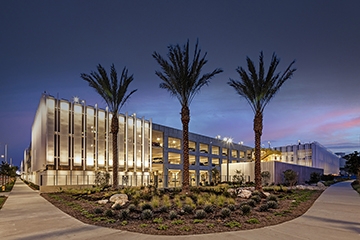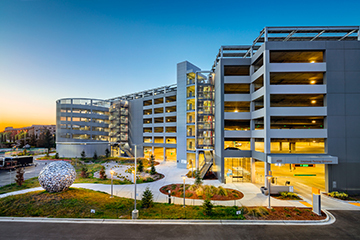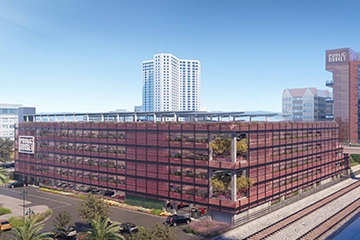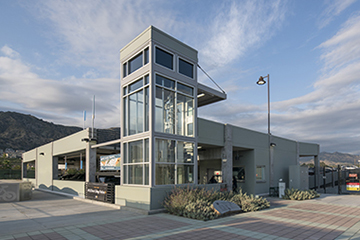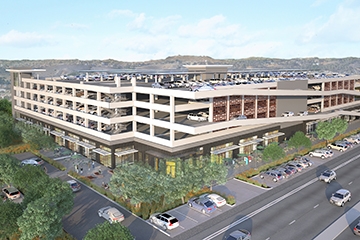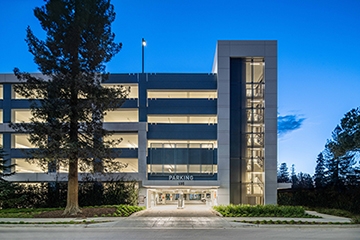The Top 10 Issues Affecting the Cost of Building a Parking Space
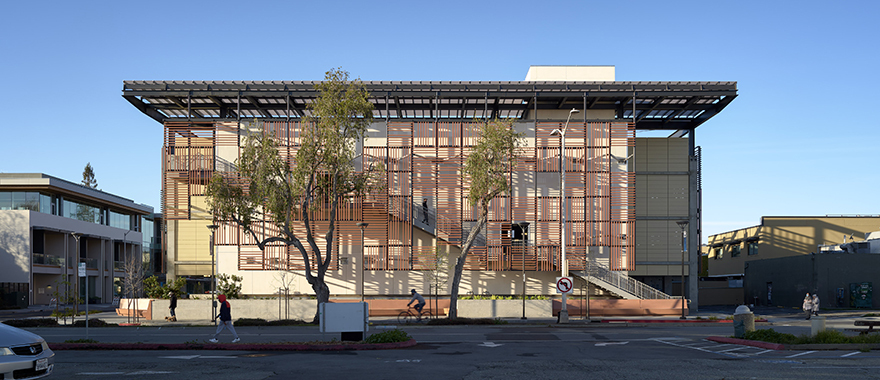
Since the cost of parking can have a substantial impact on the overall success of a project, spending capital on structured parking is one of the biggest decisions an owner faces. To put it in perspective, the square footage for parking each car is generally more than what is allotted per person in an office. |
1- Location –Construction costs vary by location due to regional factors such as the cost of labor and availability of materials. In addition, factors such as seismic building codes and soil conditions have a large impact on cost.
2- Number of parking levels – In general, a shorter parking structure in a larger-footprint will cost less per parking space than a taller structure with a smaller footprint. The cost per square foot of the ground level is less than the elevated levels above it. Therefore, a lower-height, larger-footprint structure will have a higher proportion of the cost in the first level. Likewise, the taller a structure is the heavier it is, which affects the foundation cost. A taller structure generally has a less efficient parking layout, which translates into more square feet for each parking space.
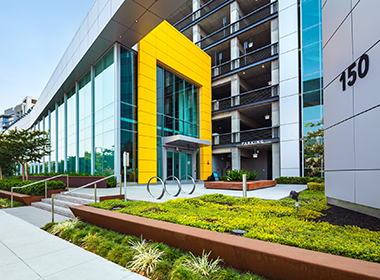 Adding mixed-uses to your parking structure will increase the cost per stall.
Adding mixed-uses to your parking structure will increase the cost per stall.
3- Total parking spaces – Similarly, a smaller project generally costs more per space than a larger project, as infrastructure costs such as elevators, stairwells, etc., are needed no matter what the size of the structure. Small structures can’t distribute these costs as efficiently as a larger structure. A 200-stall parking structure on a small site may cost about 50% more per square foot than a 1,000-stall structure with a larger footprint.
4- Efficiency – Parking efficiency refers to the amount of square footage of the overall structure divided by the number of parking stalls. This includes square footage devoted to non-parking uses, such as storage, mixed-uses, utilities, etc. Therefore, the more square footage there is in a parking structure that isn’t devoted to parking stalls, the less efficient the structure becomes. The cost of a parking space is calculated by multiplying the cost per square foot by the square foot per parking stall. So, the more square feet you have to build per stall, the greater the increase in the cost per stall. For example:
- Typical efficiencies for short-span structures: 330-390 sf/stall
- Typical efficiencies for long-span structures: 300-340 sf/stall
- Efficiencies for mixed-use structures can be well over 400 sf/stall
The more square feet you build for each stall, the more expensive it will be. For example: Assume the structure costs $90/sf and there are 500 stalls:
- 330 sf/stall * 500 stalls = 165,000 sf * $90/sf= $14,850,000
- 360 sf/stall * 500 stalls = 180,000 sf * $90/sf= $16,200,000
- This is a difference of $1,350,000, or $2,700 per stall!
5- Structural system – 40% to 70% of the cost of parking is in the structural system, which is comprised of the framing layout, which can be long span or short span, and material selection, such as cast-in-place, precast or steel. Which system is more cost effective depends on the location of the project and the preferred methods of construction in the region. This is a case-by-case analysis. The selection of a system that is not common in the area will generally cause the structure to cost more.
With a short span framing layout, columns are located approximately every three parking spaces (27x30 feet square) to support the floor slab. A long-span framing layout spaces columns 60 feet apart with beams spanning over the stalls and the drive aisle. Generally, short-span systems cost less per square foot, but are not as efficient. Long-span systems cost more per square foot, but provide more stalls in the same square footage.
6- Foundation – Structures built in areas with poor soil conditions require a more expensive, deeper foundation systems. The difference between a shallow and deep foundation system can increase the price overall by approximately 5%.
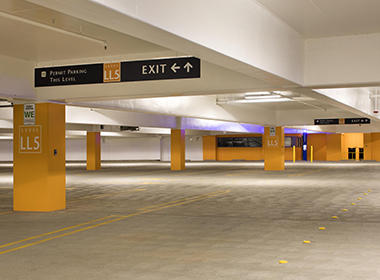 Subterranean parking can almost double the cost of an all-above grade structure.
Subterranean parking can almost double the cost of an all-above grade structure.
7- Parking below-grade – Parking below-grade is much more expensive than parking above-grade. A general rule of thumb is that going below grade is about double the cost of an all above grade structure. The increase in the cost is attributed to excavation, basement walls and mechanical ventilation.
8- Architectural façade treatment – The appearance of a parking structure is important to the surrounding environment. The cost of making that structure more pleasing can have a significant effect on the cost of the parking space. If you can use the structural system to create the architectural look, the cost per square foot will be less, because the structural system is such a large cost of the project. However, the use of additional architectural elements on top of the structural system will increase the cost. Likewise, if the architectural design necessitates a less efficient structural system, overall cost per stall will be affected.
9- Technology & Additional Program Elements – Program elements added to parking will increase the cost per stall. Parking technology such as parking guidance systems (PGS), parking access and revenue control systems (PARCS), wi-fi and customer information kiosks are becoming more and more commonplace, and also affect the cost per space. Depending on the system type and function, it is not uncommon to invest an additional $300-$1,000 per space. While including the cost, having a PGS system guide users to all stalls can increase average use from 90% to close to 100%.
Items such as a photovoltaic system covering 50% of the top level can add approximately 25% to 30% to the cost per square foot of the building. There may, however, be operational cost savings that can support this increase. A mixed-use component usually impacts the efficiency and the structural framing system, which, as described above, can have a large effect on the cost. Special site conditions such as the need to reroute utility lines or perform substantial demolition will also increase the cost.
10- Market conditions – As we have seen over the last few years, the cost of parking can be affected by market conditions. Costs can go both down and up. A normal bid market will generate four to six bids from qualified contractors. An aggressive bid market might see 10 or even more bids, some not necessarily from qualified bidders. This will cause the price to decrease but can create concern if the bidders are not qualified. An impacted bid market might see one to three bidders and price increase due to lack of competition.
Taking the time to strategize the approach to your structured parking project will increase its chances for success and could generate a savings. You can test sample scenarios using the online Parking Structure Cost Calculator, the Garagenator.
Article updated July 2023.
Subscribe to our mailing list to receive our latest parking insights


